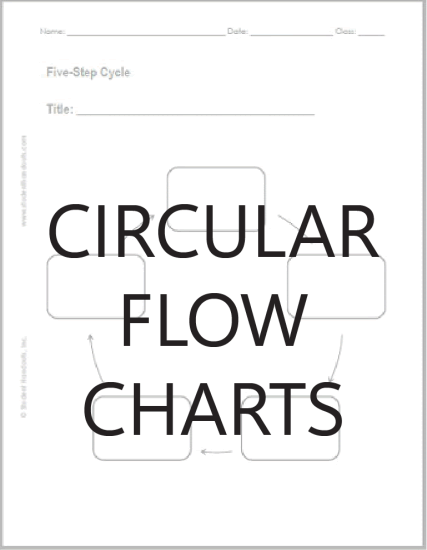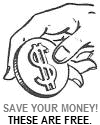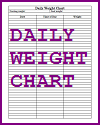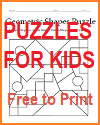| The Cycle: Circular Flow Charts |
| www.studenthandouts.com ↣ Graphic Organizers ↣ Graphic Organizers: Cycles |
 |
|---|
|
Cycle/Circular Flow Chart: Boxes, formed into a circular pattern with arrows flowing from one box to the next (one-page printable with 5, 6, or 7 boxes). Click here to print the worksheets (PDF files): Five - Six - Seven. |
|
Circular flow charts, often referred to as "circular flow diagrams," are visual representations of the flow of economic activity within a closed economic system. These diagrams are commonly used in economics to illustrate how goods, services, money, and resources circulate within an economy. Circular flow charts typically feature two main sectors: the household sector and the business sector, with various arrows indicating the flow of economic elements between them. Here are the key components and their interactions in a typical circular flow chart:
Household Sector: This sector represents individuals and households within the economy. It includes consumers, workers, and property owners. Business Sector: The business sector represents all firms and companies operating within the economy. These entities produce goods and services and employ workers. Goods and Services Flow: One of the main flows in the circular flow chart represents the movement of goods and services from businesses to households in exchange for payment (income). This flow typically moves in a clockwise direction, symbolizing the production and consumption of goods and services. Money Flow: Money flows in the opposite direction, from households to businesses, as households spend their income on goods and services. This represents the exchange of money for the products and services produced by businesses. Resource Flow: Another important flow in the circular flow chart is the flow of resources (factors of production) from households to businesses. This includes labor (workers), land, capital (machinery and equipment), and entrepreneurship. In return, households receive payments for these resources in the form of wages, rent, interest, and profits. Government Sector: In some circular flow diagrams, a third sector represents the government. The government plays a role by collecting taxes from households and businesses and providing public goods and services. It can also redistribute income and regulate economic activity. Financial Institutions: In more complex models, financial institutions may be included to illustrate the flow of savings and investment. Circular flow charts are useful for understanding the interconnected nature of an economy and the various transactions that take place within it. They help economists and students visualize how income is earned, spent, and circulated among economic agents and how resources are allocated to produce goods and services. Additionally, these diagrams are often used to explore the concepts of economic equilibrium, income distribution, and the role of government in the economy. |
| www.studenthandouts.com ↣ Graphic Organizers ↣ Graphic Organizers: Cycles |












